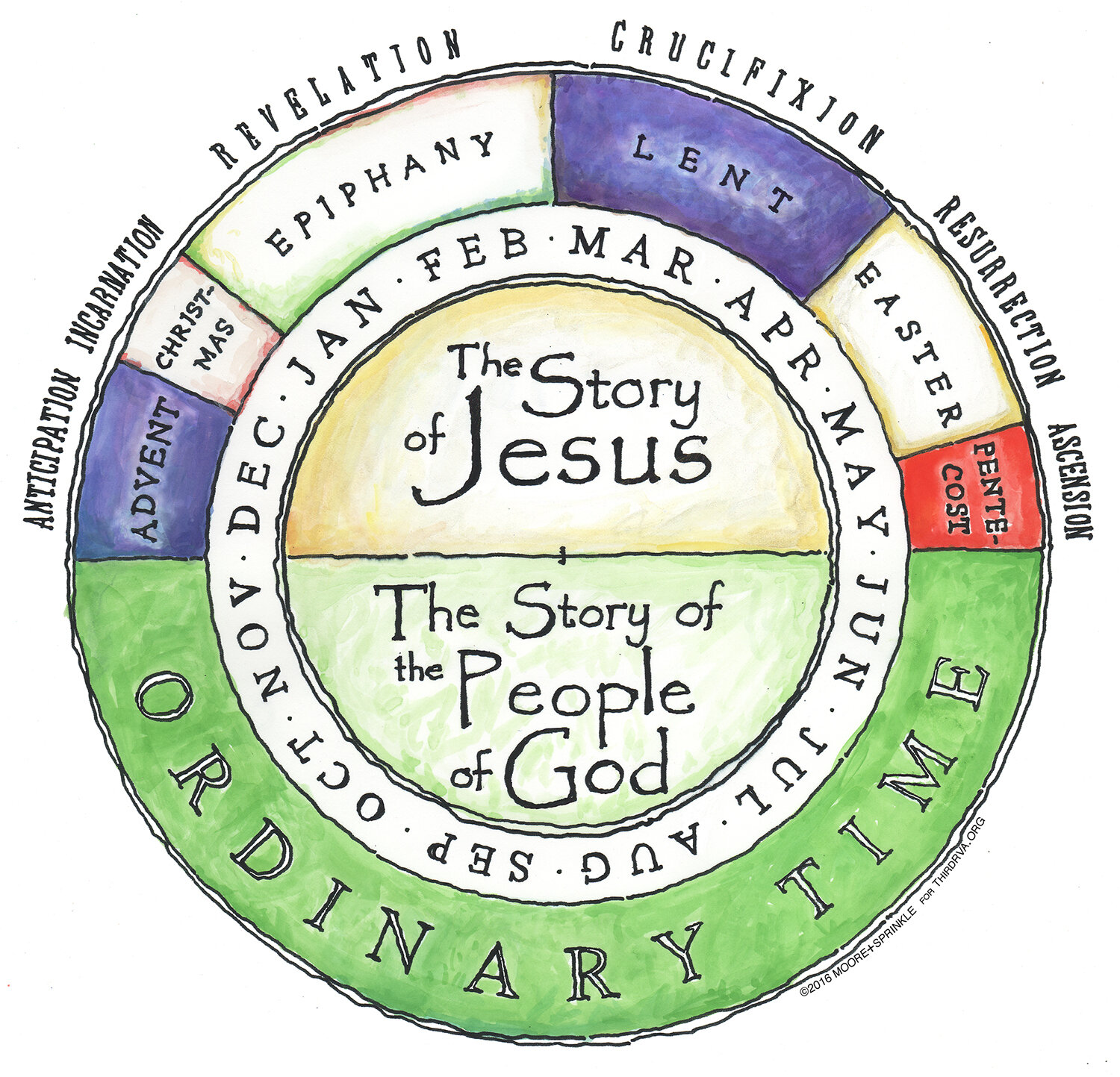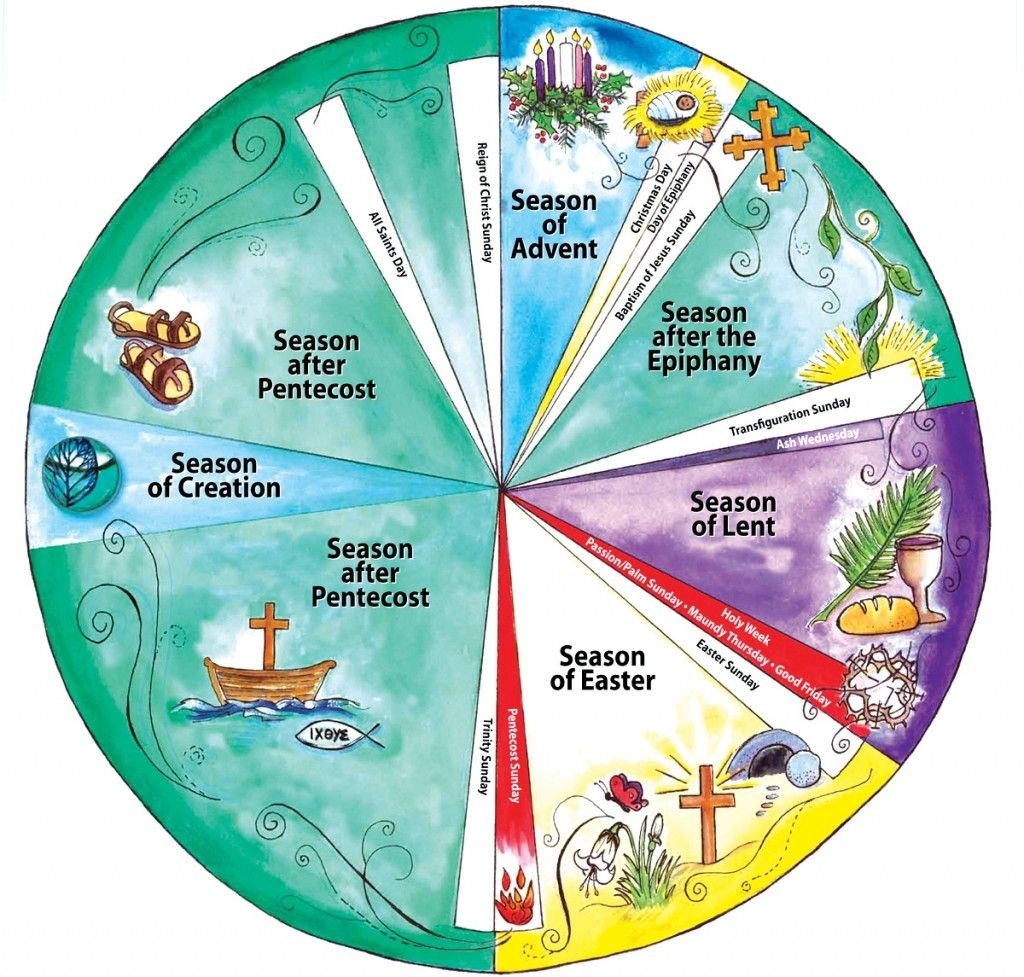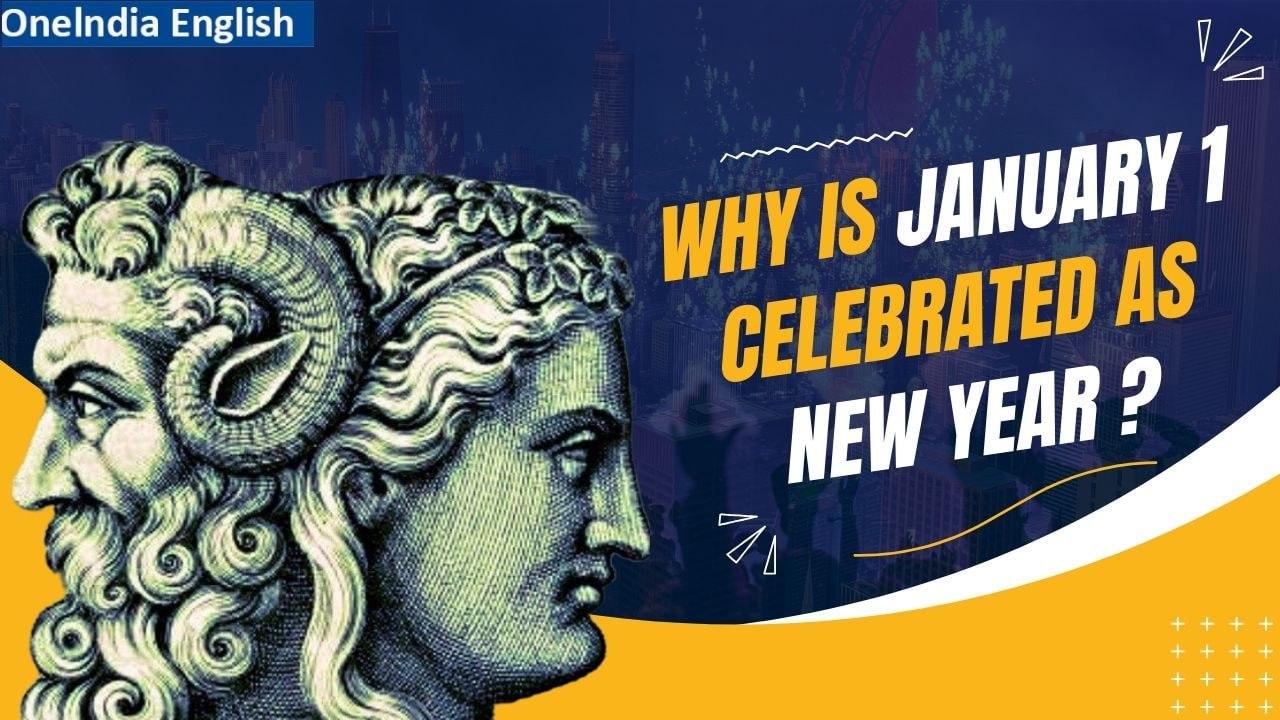The Tapestry of Time: Understanding the Church 12 months Calendar
Associated Articles: The Tapestry of Time: Understanding the Church 12 months Calendar
Introduction
On this auspicious event, we’re delighted to delve into the intriguing subject associated to The Tapestry of Time: Understanding the Church 12 months Calendar. Let’s weave attention-grabbing info and provide contemporary views to the readers.
Desk of Content material
The Tapestry of Time: Understanding the Church 12 months Calendar

The Church yr, in contrast to the secular Gregorian calendar, is not merely a system for monitoring days and dates. It is a liturgical tapestry woven with threads of scripture, custom, and theological reflection, designed to information believers by the unfolding narrative of salvation historical past. It is a journey that begins with the anticipation of Introduction, culminates within the triumphant celebration of Easter, and concludes with the promise of Christ’s return throughout Introduction as soon as extra. This cyclical nature displays the continuing relationship between God and humanity, a narrative perpetually being enacted and re-enacted throughout the lifetime of the Church.
The construction of the Church yr varies barely throughout totally different Christian denominations, however the core parts stay largely constant. The overarching themes of the yr revolve across the life, dying, and resurrection of Jesus Christ, offering a framework for understanding God’s redemptive work on the planet. Understanding the calendar is essential for appreciating the richness of liturgical worship and the deeper that means behind the seasons and festivals celebrated all year long.
Introduction: A Season of Hope and Expectation (4 Sundays earlier than Christmas)
Introduction, that means "coming" or "arrival," marks the start of the Church yr. It is a season of expectant ready, not only for the celebration of Christmas, however for the second coming of Christ. The 4 Sundays of Introduction are sometimes characterised by themes of hope, peace, pleasure, and love, reflecting the progressive unfolding of God’s plan of salvation. The purple liturgical shade symbolizes penitence and preparation, reminding believers to look at their hearts and put together for the arrival of the King. Introduction is a time of reflection on the prophecies of the Previous Testomony, anticipating the success of God’s guarantees within the delivery of Jesus. The lighting of the Introduction wreath, with its 4 candles representing these themes, is a standard observe throughout this season.
Christmastide: Celebrating the Incarnation (Christmas Day to Epiphany)
Christmastide celebrates the incarnation of God – the second when God grew to become human within the particular person of Jesus Christ. The nativity story, recounted within the Gospels, is the centerpiece of this joyous season. The delivery of Jesus shouldn’t be merely a historic occasion however the pivotal second in human historical past, the daybreak of a brand new period. Christmastide extends past Christmas Day itself, encompassing the twelve days following, culminating within the Feast of the Epiphany.
Epiphany: Manifestation of Christ (January sixth)
Epiphany, that means "manifestation," celebrates the revelation of Jesus Christ to the world. Historically, it commemorates the go to of the Magi, who acknowledged Jesus because the King of the Jews. Nonetheless, Epiphany additionally encompasses different manifestations of Christ, similar to his baptism within the Jordan River and the miracle at Cana. This feast marks the broadening of the gospel message past the Jewish folks to the Gentiles, symbolizing the common nature of God’s love.
Bizarre Time (After Epiphany and after Pentecost)
Following Epiphany, and after Pentecost, the Church enters a interval referred to as Bizarre Time. This is not to indicate that these instances are much less vital, however fairly that they’re characterised by a extra common sample of liturgical observance. Bizarre Time offers a chance for reflection on the teachings and ministry of Jesus, drawing from the Gospels and different scriptural readings. It is a time for deepening religion, cultivating religious disciplines, and dwelling out the gospel in each day life. The liturgical shade is inexperienced, symbolizing progress and life.
Lent: A Time of Repentance and Renewal (40 days earlier than Easter)
Lent, a interval of 40 days (excluding Sundays), is a season of penitence and preparation for Easter. It commemorates the 40 days Jesus spent fasting within the desert, resisting temptation and getting ready for his ministry. Lent is a time for self-reflection, repentance, and religious renewal. Many Christians have interaction in practices similar to fasting, prayer, almsgiving, and elevated Bible examine to deepen their relationship with God. The liturgical shade is purple, symbolizing penitence and introspection. Ash Wednesday marks the start of Lent, a day of repentance and receiving ashes as an emblem of mortality and the necessity for religious renewal.
Holy Week: The Ardour and Resurrection of Christ
Holy Week is essentially the most sacred week within the Christian calendar, culminating within the celebration of Easter. It recounts the ultimate week of Jesus’ life, from his triumphant entry into Jerusalem (Palm Sunday) to his crucifixion (Good Friday) and resurrection (Easter Sunday). Every day of Holy Week holds profound significance, recalling the occasions that led to the salvation of humanity. The liturgical companies throughout Holy Week are sometimes significantly solemn and reflective, emphasizing the sacrifice of Jesus and the triumph of his resurrection.
Easter: The Resurrection of Jesus Christ
Easter, the fruits of Lent and Holy Week, is crucial feast within the Christian calendar. It celebrates the resurrection of Jesus Christ from the useless, the victory over sin and dying, and the promise of everlasting life. Easter is a time of nice pleasure and celebration, marking the last word triumph of fine over evil, hope over despair. The liturgical shade is white, symbolizing purity, victory, and new life.
Eastertide: Celebrating the Resurrection (Easter Sunday to Pentecost)
Eastertide, also referred to as the Easter season, extends for 50 days after Easter Sunday, culminating within the feast of Pentecost. This era is a time of continued rejoicing and celebration of the resurrection, reflecting on its implications for the lives of believers. The liturgical shade is white, reflecting the enjoyment and new life caused by the resurrection.
Ascension Day: Christ’s Ascension into Heaven
Ascension Day, forty days after Easter, commemorates the ascension of Jesus Christ into heaven. It marks the completion of Jesus’ earthly ministry and his return to the Father, signifying the institution of the dominion of God.
Pentecost: The Coming of the Holy Spirit
Pentecost, fifty days after Easter, celebrates the descent of the Holy Spirit upon the apostles, marking the delivery of the Christian Church. It is a time of renewal and empowerment, because the Holy Spirit equips believers to witness to the gospel and unfold the message of Christ all through the world. The liturgical shade is purple, symbolizing the fireplace of the Holy Spirit.
The Trinity Season (After Pentecost)
Following Pentecost, the Church enters one other interval of Bizarre Time, sometimes called Trinity Season, specializing in the thriller of the Holy Trinity – Father, Son, and Holy Spirit. This era permits for a deeper understanding of the character of God and the connection between the three individuals of the Trinity.
Different Important Feasts and Observances:
Past these main seasons, the Church yr consists of quite a few different vital feasts and observances, commemorating the lives of saints, vital occasions in Church historical past, and explicit theological themes. These celebrations enrich the liturgical tapestry and supply additional alternatives for reflection and progress in religion.
Conclusion:
The Church yr calendar is not merely a schedule of occasions; it is a profound journey by the story of salvation. It gives a framework for understanding God’s redemptive work on the planet, guiding believers by seasons of anticipation, repentance, celebration, and reflection. By understanding the themes and significance of every season, Christians can have interaction extra deeply with their religion and expertise the fullness of the liturgical life. The cyclical nature of the Church yr reminds us that the story of salvation is an ongoing narrative, perpetually unfolding within the lifetime of the Church and within the hearts of believers. It’s a timeless tapestry, woven with threads of hope, pleasure, sorrow, and finally, triumphant resurrection, regularly reminding us of God’s unwavering love and the enduring promise of everlasting life.








Closure
Thus, we hope this text has supplied precious insights into The Tapestry of Time: Understanding the Church 12 months Calendar. We hope you discover this text informative and helpful. See you in our subsequent article!